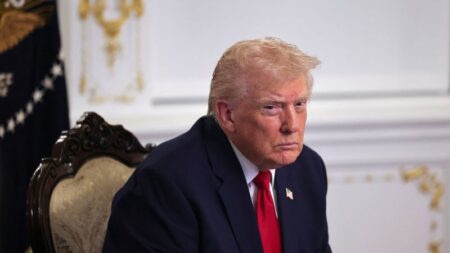In the last 100 days, a seismic shift has occurred within the U.S. federal government, characterized by extensive layoffs and firings that have impacted at least 30 different agencies and resulted in approximately 121,000 federal employees losing their positions. This dramatic reduction in workforce follows the onset of President Donald Trump’s second term and has emerged as a matter of significant concern for the nation’s public services. The figures reported, which exclude those placed on administrative leave or who accepted voluntary buyouts, paint a stark picture of an administration in upheaval, where workforce reductions may reshape the operational capacities of various governmental departments.
The ramifications of these widespread layoffs extend beyond the immediate disruption of federal employment; experts indicate that they threaten the delivery of essential services that Americans rely on daily. With looming concerns regarding the stability of services in education, healthcare, transportation, and public safety, public sentiment is increasingly wary. A recent CNN poll outlines a growing anxiety among U.S. adults, suggesting that over half believe that cuts to federal programs borne out of these layoffs could have detrimental effects on both their families and the economy at large. Public trust in the government’s ability to fulfill its responsibilities is being put to the test, as citizens await clarity on how these cuts will translate into service availability or quality.
Within the federal landscape, data sourced from CNN reveals a distinctive pattern emerging from the layoffs. Initial spikes in job losses were observed in February, with a gradual tapering off throughout March and April. However, the scale of these firings in federal agencies has eclipsed job cuts seen in any other sector thus far in 2025. Some agencies experienced significant reductions; while many agencies sustained cuts of less than 10%, others, such as the Department of Education and the Agency for International Development (USAID), experienced drastically higher losses indicating a targeted approach to downsizing.
The Department of Veterans Affairs (VA) stands out as the agency with the most significant impact, seeing over 70,000 layoffs which comprise approximately 15% of its workforce. As the second-largest federal department, the VA’s role in delivering vital healthcare services to veterans and their families underscores the potentially grave consequences these layoffs may have on individuals who depend on these essential services. Additionally, the battle for resource allocation becomes more pronounced as the downsizing revolves around an agency that is already tasked with addressing the complex needs of a vulnerable population.
Conversely, USAID has faced an unparalleled assault on its structure, highlighted by the announcement of its official closure by the State Department after enduring months of budget cuts. The agency previously engaged in crucial global initiatives to combat problems such as hunger and human trafficking, and its absence will reverberate in regions that heavily relied on its funding and support. This closure demonstrates an outright shift in prioritization within U.S. foreign aid and raises grim predictions about the long-term impact on global humanitarian efforts.
CNN’s analysis draws a compelling comparison, illustrating that federal layoffs have, in fact, outstripped job cuts in other key sectors including retail and technology in the early months of 2025. This suggests a unique crisis within the federal workforce that has implications for the nation’s economic landscape while simultaneously elevating concerns about previously robust programs that served the American populace.
Despite the daunting evidence indicating at least 121,000 federal job losses, experts are quick to note that the actual number could be even more substantial than reported, with outplacement firms like Challenger, Gray & Christmas Inc. warning of a potential reality that may unfold in the coming months. With uncertainty shadowing the future of federal workforce dynamics under the current administration, professionals within public service anticipate that these labor cuts will leave lasting repercussions—not only in the immediate term concerning operational efficiency but also in the broader social impact on American society and governance over the coming years.











